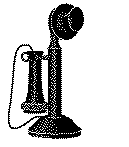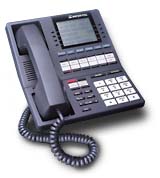| Message-ID: <ff585f2b-8c6b-8b9b-0f42-45d2315c3bba@interisle.net>
Date: 30 May 2023 11:24:40 -0400
From: "Fred Goldstein" <invalid@see-sig.invalid>
Subject: Re: Congress moves to preserve AM radio in cars
On 5/28/2023 6:28 PM, Bill Horne wrote:
> On Sat, May 27, 2023 at 09:17:25PM -0000, Garrett Wollman wrote:
>> ...
>> You might be surprised how many radio stations, after conditioned
>> analog lines and ISDN ceased to be available for new installs from
>> ILECs, came to depend on the Internet for their studio-transmitter
>> links, especially now when it's audio-over-IP all the way from the
>> mixing console to the transmitter.
>
> At the time I retired, Verizon had substituted specialized T-Carrier
> channel units for the conditioned lines: the T-Carrier links didn't
> require any equalization, and since most local pairs aren't loaded,
> there was usually no need to equalize the local pairs beyond seting
> some computer-generated options in the channel units.
>
> As for ISDN, I'm surprised that it would ever be used for "STL"
> circuits in the first place: ISDN was a dialup service, and even if
> the radio station owner was willing to bear the expense of the
> Nailed-up "data" connections, they would be risking disconnects caused
> by all of the usual problems that can interrupt both digital and
> analog connections: T-Carrier failure, etc.
>
> Were you thinking of IDSL connections?
Radio stations used ISDN for events, like school sports and
appeareances at shopping malls. STLs were either microwave or fixed
circuits.
Nowadays stations do use the Internet for STLs, though it may be
accompanied by a microwave channel. One major-market FM station I have
worked with is a good example. They have an analog (900 MHz) STL from
a high rooftop near the studio to the main transmitter tower on a big
hill some miles away. But that's now just a backup. GatesAir has a
clever new system where stations can fill in coverage gaps within
their licensed contours via booster transmitters. A booster is an
additional lower-power transmitter on the same frequency (vs. a
translator, which needs its own channel). Obviously a booster can't
listen to the main transmitter and retransmit it (on frequency) the
way a translator can, but it can use its own STL. The trick is that
the STLs to both the main transmitter and boosters are digital and
they all have GPS sync. So they all buffer the broadcast for enough
milliseconds to make sure that they're all in perfect alignment with
GPS timing. The booster antennas are directional, pointing away from
the main transmitter, so the signals from both transmitters arrive in
sync and don't interfere. For the main STL, it's unlicensed 5 GHz
microwave. That can go quite a few miles between decent size dishes,
and it's cheap; the dishes not only give gain but help null out all
the Wi-Fi noise below the path. The boosters use cable modems for
their STLs. If something fails, it falls back to the analog STL on
just the main transmitter.
>> Many radio transmitter sites have just a commodity Internet
>> connection that feeds their remote control and the transmitter: no
>> Internet = station off the air. More profitable stations,
>> especially those that haven't moved around a lot, may have an
>> analog microwave path for backup, or even an optical wide-area
>> network, but this costs a lot more money and is hard for many
>> engineering managers to justify to barely-profitable companies
>> constantly seeking to cut costs.
>
> It's been a while since my "First Phone" was renewed as a "General
> Radiotelephone" license, but what I recall from my days as a radio
> tech was that even clear-channel stations avoided mircowave like the
> plague. The siting effort was incrediby expensive, with
> complementary towers at each end of the path, with the risks of any
> off-kilter microwave oven killing the link, and with a never-ending
> need to pay someone to predict what buidings would be built in the
> middle of the Fresnel Zone.
Not true. Aural analog STLs are on 900 MHz, which doesn't get rain fade,
and have been there pretty much forever. Microwave in general, though,
is pretty easy to make reliable, based on current digital technology,
and the radios have gotten quite cheap. Buildings do get put up in the
path if you're in an urban core, but you can usually get time to work
around them (engineer a new path) before they're done. TV STLs are
usually microwave on 7 or 13 GHz. Back in the olden days, stations had
to buy their STLs from Ma Bell, who used microwave.
> Of course, we all know the on-again, off-again love triangle that has
> fiber-optic cable, Ditch Witch machines, and competent fiber splice
> technicians at the vertices. I've never met a chief Engineer who
> trusted fiber any more than microwave - but it's been a while, so
> perhaps the reliability has improved.
Backhoe fade continues to be a problem. You can't foolproof things --
we keep getting greater fools.
--
Fred R. Goldstein k1io fred "at" interisle.net
Interisle Consulting Group
+1 617 795 2701
|
| Message-ID: <20230530171358.GA418805@telecomdigest.us>
Date: 30 May 2023 13:13:58 -0400
From: "Bill Horne" <digest-replies@telecomdigest.net>
Subject: Re: Congress moves to preserve AM radio in cars
On Tue, May 30, 2023 at 11:24:40AM -0400, Fred Goldstein wrote:
> Radio stations used ISDN for events, like school sports and
> appeareances at shopping malls. STLs were either microwave or fixed
> circuits.
>
> Nowadays stations do use the Internet for STLs, though it may be
> accompanied by a microwave channel.
>
I guess I /am/ getting old: I don’t seem to be writing cogently of
late.
I won't labor the point: my objection to Uncle Sam’s determination to
have every-single-car capable of listening to AM radio stations is,
IMNSHO, just psychological warfare, intended to keep voters
"connected" to a Father-Knows-Best era when only tall white men were
allowed to lead or make important decisions.
Of course, those who own AM stations want everyone to be able to
listen to their programs: that’s a given. The fact that they want
those whom buy electric vehicles to pay extra to make that possible is
just a time-honored business trick: getting your customers to
capitalize your growth, the same way that Internet users paid for
the "WiFi Calling" capability that every Cellular provider uses to
maximize profits while minimizing the need to buy, build, and maintain
cell sites.
I'm guessing that the automakers will take the easy way out, and (as
has been suggestd already) include AM receivers in their vehicles,
without the shielding which would be required to make them work. It's
the same result without making Uncle Sam angry or embarrassed enough
to strike back: AM Broadcast will eventually (pardon the pun) fade
away.
Bill Horne
|
| Message-ID: <20230530164629.GA418766@telecomdigest.us>
Date: 30 May 2023 12:46:29 -0400
From: "The Telecom Digest" <digest-replies@telecomdigest.net>
Subject: It's the end of an era at Sprint
By Kayla Wassell on May 24, 2023
Sprint is closing all retail stores and concluding its lengthy run as
a telecommunications provider, founded in 1899 in Kansas by Cleyson
Brown. Sprint started offering wireless services in 1995 and was never
able to quite keep up with the times or other emerging
competitors. Nearly a century of being a leading telecommunications
service went the way of the Dodo after the wireless craze swept the
nation.
T-Mobile merged with Spring on April 1st, 2020, and has been chiseling
away at Sprint products and services ever since. The plan was always
to envelop Sprint’s customers into the T-Mobile brand and now the
final stages have been scheduled. T-Mobile announced back in March of
2023 it was also acquiring Mint Mobile, eliminating more competition
for the “Uncarrier” while increasing its user base. Now Sprint is
reportedly finally coming to an end, according to The Mobile Report.
https://cordcuttersnews.com/say-a-final-goodbye-to-sprint-at-t-mobile-is-reportedly-shutting-it-down/
|
| Message-ID: <sympa.1685496375.27682.269@telecom-digest.org>
Date: Tue, 30 May 2023 21:48:30 -0400
From: "Telecom Digest Moderator" <moder8@telecom.csail.mit.edu>
Subject: Please help us find a new Moderator
Hello again!
We're still seeking a new Moderator for the Telecom Digest, and I'm hoping
that YOU can help!
It's almost June, and although I've tried everything I can think of, we still
need a volunteer to step up and take on the Moderator role. I am hoping that
YOU know who the best person is for the Moderator job!
Please think about those you know: retirees, current telecom workers, or
experienced managers who would like a challenge and who have the background to
take on the job. I'm betting that you can recommend someone who will be
willing to step forward.
Please ask those you know to spread the word, and especially to spread my
promise that I'll do everything I can to make them look good and to be
proficient and at-ease in the role.
Thanks for your help!
Bill Horne, Moderator
380-1440
Area Code 828
|



